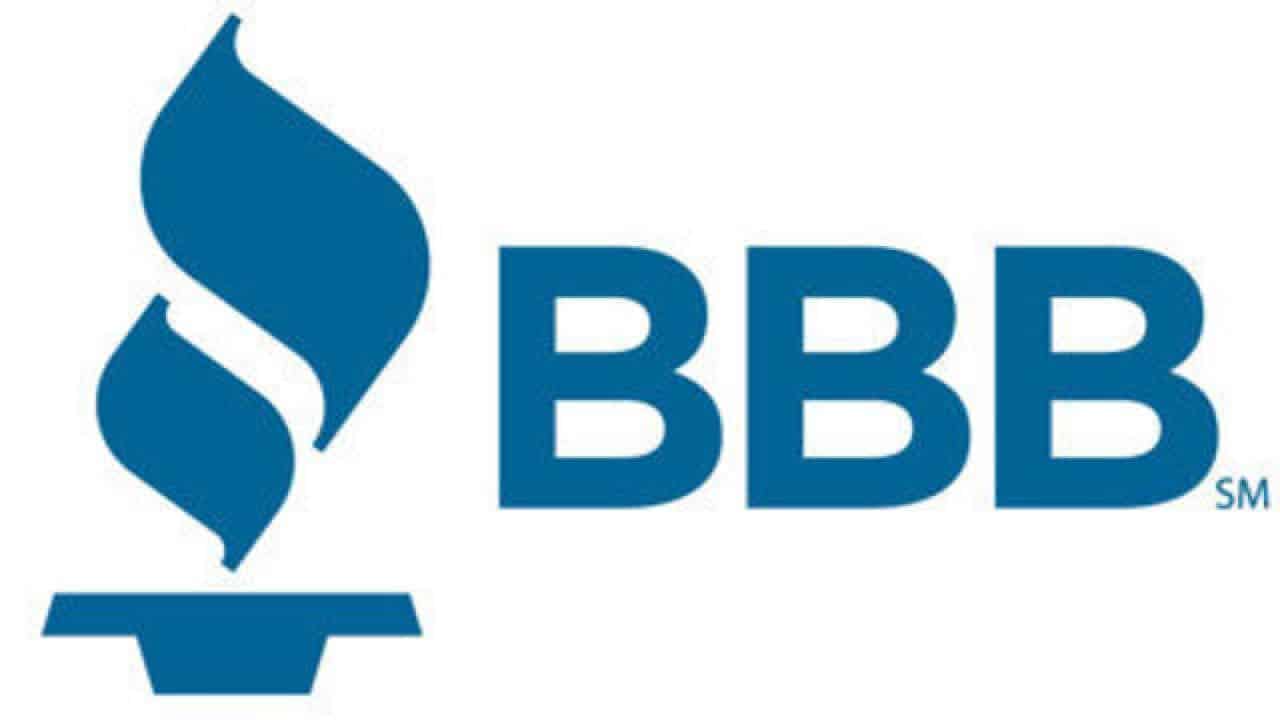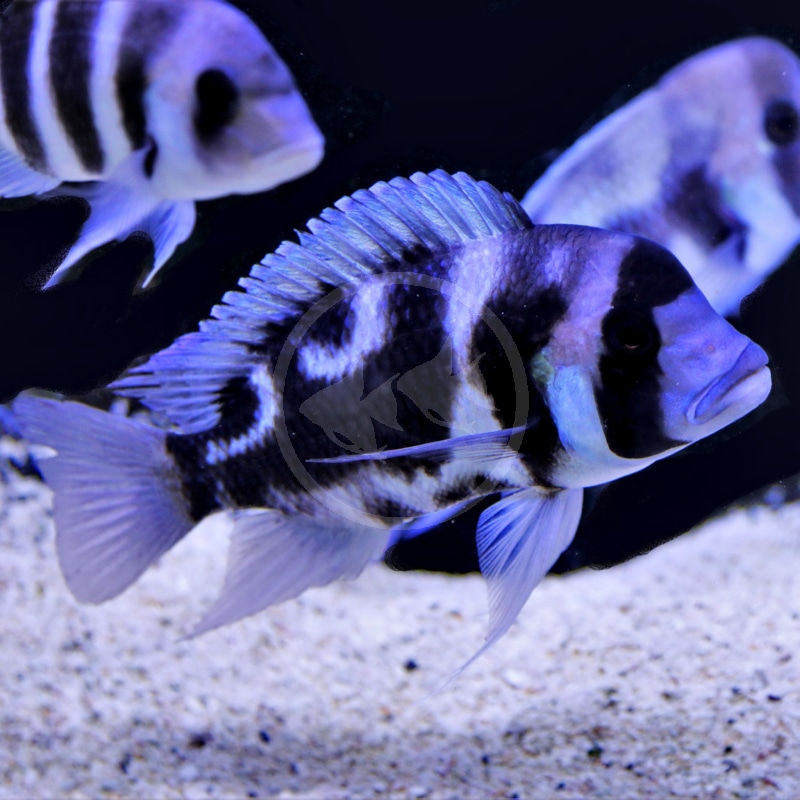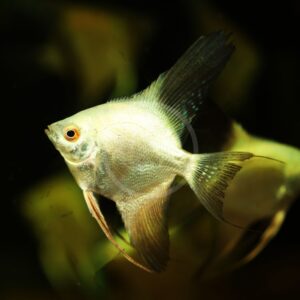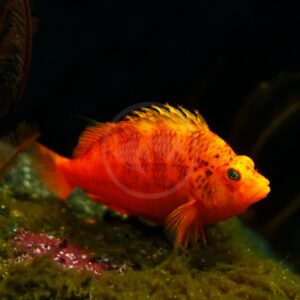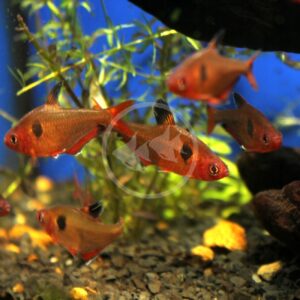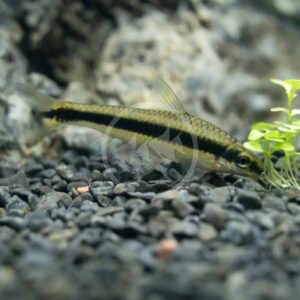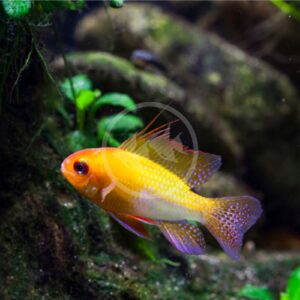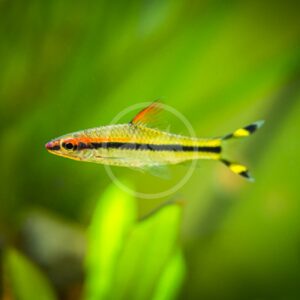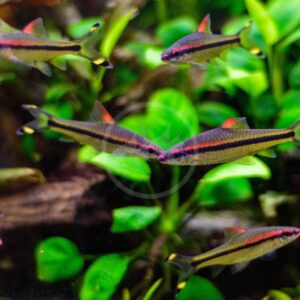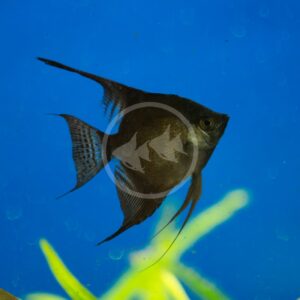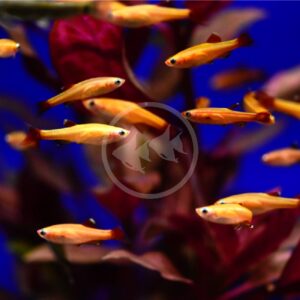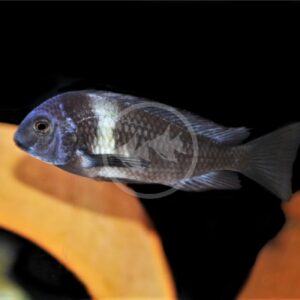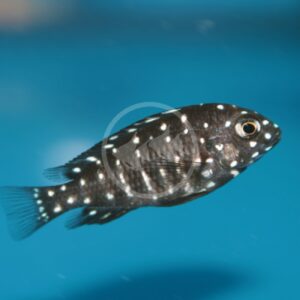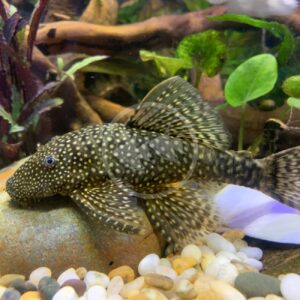Care Level: Moderate
Temperament: Semi-Aggressive
Live Plant Safe: No
General Description: Frontosa, also known as the Humphead Cichlid, are endemic to the southern portion of Lake Tanganyika in rocky areas at variable depths. Despite their secondary name, only adult male Frontosa develop an exaggerated hump on their heads. A popular fish, Frontosa do have more specialized care requirements compared to most other African cichlids (see below). Black Widow Frontosa exhibit a pattern mutation resulting in an irregular pattern or marbling instead of the normal dark vertical bands along their flank. Color intensity and the number of these bands can vary among localities of Frontosa, and such descriptions are often included in their names to maintain the gene pool of said groups. Frontosa are gregarious, preferring to be maintained in a group of at least five individuals, but more are encouraged if the aquarium is large enough. Unlike most cichlids, male Frontosas do not hold distinct territories and rather form dominance hierarchies. Frontosa are next to impossible to sex accurately as juveniles; at a larger size, males will have a more developed hump and extended dorsal and anal fins compared to females. An adult Frontosa can reach a size of approximately 10″, with males growing larger than females.
Diet Requirements: Frontosa, in nature, are generalized predators feeding on small fishes and crustaceans but will also graze on algae. We discourage feeding live fish because they are often of little nutritional value and increase the risk of introducing disease. A diet made up of various high quality protein and vegetable based foods are ideal. Such options include frozen brine shrimp, clams, mussels, and pieces of silverside fish. Foods containing Spirulina algae are a plus. Frontosa will accept large sinking pellet foods and flake foods, but these should not make up a large portion of the diet. Variety is the spice of life in order to maintain color, immune function and longevity of your fish. Avoid beef heart, as the lipids in this frozen food cannot be metabolized properly by the digestive system of Frontosa.
Care Requirements: An established minimum 55 gallon aquarium is ideal for a small Frontosa. Size up accordingly for a larger individual or group of Frontosa. This cichlid cannot be put into a biologically immature aquarium. Weekly water changes are encouraged to keep water parameters pristine (Nitrates < 15 ppm) as Frontosa are intolerable of high nitrates and deteriorating water parameters. Equipping the aquarium with a canister filter can also be advantageous to maintain a healthier environment for Frontosa. The aquarium should be aquascaped with some stacked rocks to create caves, or the use of broken terra cotta pots can be used as refuges. Ample unobstructed and open swimming space should also be provided. A sandy or fine substrate is preferred and the aquarium needs to be well oxygenated. African cichlid specific substrates, or even marine Aragonite substrate, are great choices because they will buffer the pH and alkalinity to levels characteristic of Lake Tanganyika. Frontosa are compatible with a number of Malawian and Tanganyikan fish, but should not be kept with overly pugnacious species, or species that can become a meal. Recommended water conditions, 76-82° F, KH 8-27, pH 8.0-9.0.
Purchase Size: Small: 1-1/4” to 1-1/2”, Medium: 1-3/4” to 2-1/2”
Note: Your item may not look identical to the image provided due to variation within species. Purchase sizes are approximate.

